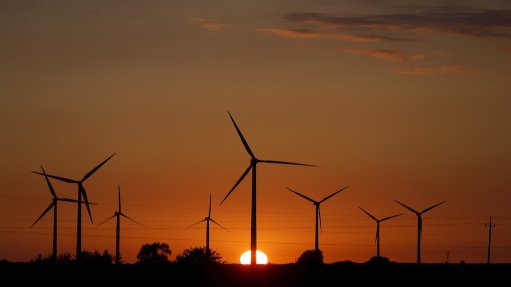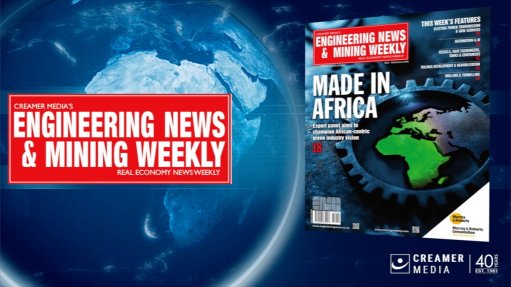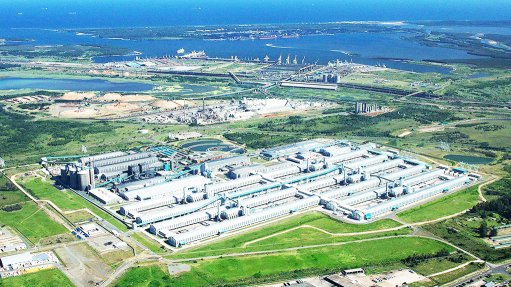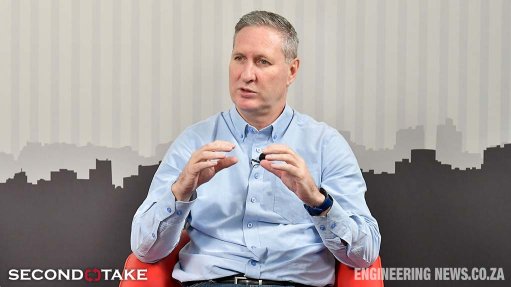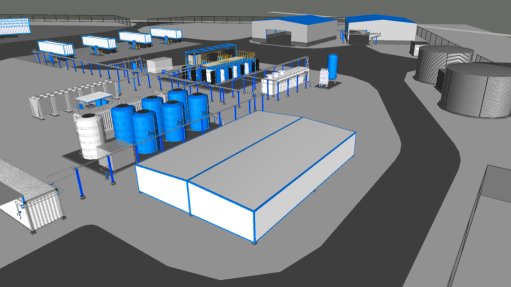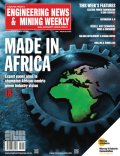LEO satellites not a replacement for networks
While low Earth orbit (LEO) satellite broadband constellations seem like a good alternative as the higher stages of loadshedding affects telecommunications services, it is not likely to take off as a replacement to traditional terrestrial networks in South Africa.
Speaking during the launch of Deloitte’s 'Technology, Media and Telecommunications (TMT) Predictions 2023' report on Tuesday, Telkom strategy and transformation office group executive Izaak Coetzee said that technological advancements in recent years had been significant, particularly regarding latency and speed, besides others.
Citing Starlink as an example, he pointed to promised speeds of between 50 Mb/s and 150 Mb/s.
“A lot of people locally on mobile services typically consume 10 Mb/s to 20 Mb/s. So this seems like it is a great opportunity, and perhaps great competition.”
However, Coetzee believes that, while there is ample opportunity for satellite-based connectivity in rural regions not reached by terrestrial networks or where there is no alternative, as LEO satellites are able to potentially bring high-speed Internet to every corner, it is not a feasible alternative in metropolitan urban areas.
“There is a place for LEO satellites, as we still have a lot of areas in South Africa that are not covered through mobile resources,” he says, noting that there is also a “huge” opportunity to leverage satellite for specific applications, such as those related to mitigating flooding and natural disasters.
“I am not so sure about it just replacing traditional networks, especially in urban areas,” he said in response to a question during a panel session at the launch of the report.
The price point was a hurdle, he said, as, for example, the Starlink service would cost R1 500, while the cost of a fourth-generation (4G) or fifth-generation (5G) service was well below that.
Further, Coetzee said that, with the significant investments made into 5G networks – and the need to recover and monetise these investments – it was unlikely that many South African telecommunications companies would venture directly into this space.
Deloitte UK Global TMT Insights' Ben Stanton agreed that LEO satellites were not likely to displace mobile networks, as mobile infrastructure was cheaper and easier to deploy, maintain and operate at scale.
In addition, satellite does not have backhaul capacity to compete at a national scale, there are only a limited number of orbital slots and LEO satellites only stay in orbit for five to seven years, compared with a 4G network infrastructure, which has a lifespan that could last up to 30 years.
However, the TMT Predictions 2023 report outlines an expected surge in satellite broadband deployments globally.
Deloitte Global predicts that more than 5 000 broadband satellites will be in LEO by the end of 2023 providing high-speed Internet to nearly a million subscribers across the globe.
“If every organisation currently planning to build an LEO constellation succeeds, seven to 10 competing networks could be operational by 2030, with a total of 40 000 to 50 000 satellites serving more than ten-million end-users,” the report highlights.
On its current trajectory, the LEO broadband market will not only grow, but also drive the expansion of supporting markets, creating a new and dynamic ecosystem.
“It is likely that new applications will emerge, prices will decline, coverage and reliability will improve and latency will fall,” it said.
Currently, SpaceX’s Starlink, which has more than 2 600 working satellites serving almost 500 000 subscribers, has demonstrated, beyond typical consumer use, its utility for emergency services in a number of recent natural disasters.
SpaceX also received Federal Communications Commission approval to provide mobile connectivity for boats, planes and other vehicles, while multiple airlines have started exploring and testing the system for high-speed in-flight Internet access.
The report further highlights Amazon’s (Project) Kuiper. While none of its planned 3 236 satellites are currently in orbit, Amazon announced a multibillion-dollar agreement with three providers in April 2022 to launch most of these satellites over five years.
However, according to the report, Amazon must have half of its satellites in place by 2026 and the entire constellation in orbit by 2029 or it will lose its FCC authorisation.
Meanwhile, UK-based OneWeb has more than two-thirds of its planned 648 satellites in orbit, with ambitions to start global operations by the end of 2023.
“OneWeb also recently combined with France-based Eutelsat in a $3.5-billion deal. The combined company intends to focus on enterprise and government connectivity by integrating Eutelsat’s geostationary satellites with OneWeb’s LEO network,” Deloitte outlines.
The report further highlights Canada’s Telesat, which plans to start launching its 188-satellite Lightspeed network in 2025, as well as AST SpaceMobile, which is planning a constellation of 243 satellites that will allow mobile devices to connect directly to its LEO network.
China, as part of a national plan, launched six test satellites in March 2022 for the private firm Galaxy Space. China’s network may eventually contain up to 13 000 satellites.
However, there are challenges to this fast-growing industry, the report warns, pointing to a much more crowded orbital environment significantly raising the risk of collisions and requiring higher levels of cooperation and coordination.
Space surveillance networks currently track more than 31 000 orbiting objects, including more than 6 000 operating satellites, amid the estimated hundreds of thousands of untracked debris fragments, ranging from pieces of destroyed satellites to paint flecks.
“The number of near-collisions—satellites passing within 1 km of each other—has already risen significantly since LEO broadband constellations have started going up,” the TMT report notes.
“This challenge is driving the creation and growth of new markets. Prime among these is commercial space situational awareness (SSA), which, while niche today, could grow to $1.4-billion by 2032.”
Accordingly, SSA providers are building a combination of ground- and space-based sensors along with powerful computer models to track objects in space and predict their orbital paths.
In-orbit satellite servicing and space-debris removal could also receive a boost from LEO satellite constellations.
“In space-debris removal, a specialised satellite rendezvous with a dead satellite or object, captures it, and pushes it into a different orbit or the atmosphere to safely burn up. Several proof-of-concept space debris-removal missions have already occurred, and many more are planned in the coming years.”
Further, in-orbit satellite servicing aims to prolong satellite life, including a servicing vehicle which could refuel a satellite to extend its usefulness or, if a malfunction occurs, swap out a part to avoid having to scrap the whole thing.
The industry-led Consortium for Execution of Rendezvous and Servicing Operations is currently working to develop standards for this emerging industry, the report points out.
Comments
Announcements
What's On
Subscribe to improve your user experience...
Option 1 (equivalent of R125 a month):
Receive a weekly copy of Creamer Media's Engineering News & Mining Weekly magazine
(print copy for those in South Africa and e-magazine for those outside of South Africa)
Receive daily email newsletters
Access to full search results
Access archive of magazine back copies
Access to Projects in Progress
Access to ONE Research Report of your choice in PDF format
Option 2 (equivalent of R375 a month):
All benefits from Option 1
PLUS
Access to Creamer Media's Research Channel Africa for ALL Research Reports, in PDF format, on various industrial and mining sectors
including Electricity; Water; Energy Transition; Hydrogen; Roads, Rail and Ports; Coal; Gold; Platinum; Battery Metals; etc.
Already a subscriber?
Forgotten your password?
Receive weekly copy of Creamer Media's Engineering News & Mining Weekly magazine (print copy for those in South Africa and e-magazine for those outside of South Africa)
➕
Recieve daily email newsletters
➕
Access to full search results
➕
Access archive of magazine back copies
➕
Access to Projects in Progress
➕
Access to ONE Research Report of your choice in PDF format
RESEARCH CHANNEL AFRICA
R4500 (equivalent of R375 a month)
SUBSCRIBEAll benefits from Option 1
➕
Access to Creamer Media's Research Channel Africa for ALL Research Reports on various industrial and mining sectors, in PDF format, including on:
Electricity
➕
Water
➕
Energy Transition
➕
Hydrogen
➕
Roads, Rail and Ports
➕
Coal
➕
Gold
➕
Platinum
➕
Battery Metals
➕
etc.
Receive all benefits from Option 1 or Option 2 delivered to numerous people at your company
➕
Multiple User names and Passwords for simultaneous log-ins
➕
Intranet integration access to all in your organisation







